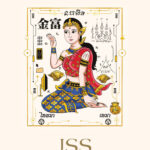Wat Pa Nanachat (near Ubon Ratchatani, Thailand) was founded by the late Ajarn Cha as a place where non-Thai speaking foreigners could train as monks in the Thai forest tradition. Most of the ten or so monks there are from Europe and America.
The food is first-rate. There are daily vegetarian options. You only eat once a day but you will soon find that this is sufficient. There is a daily nampanna, or hot drinks break everyday in the evening to ward off hunger and give yourself a sugar boost.
The practice is strict and simple and down-to-earth. While you might call Mahasi a school of vipassana meditation, you might call the Ajarn Cha lineage (of which the monks are fiercely proud) the School of Sweeping and Bowing. Ajarn Gavesako, One of Ajarn Cha`s most respected disciples was once confronted with with the criticism that, “your lineage teaches nothing but how to bow.”
“It`s true.”
One thing to note about what goes on at Wat Pa Nanachat is that it is very culturally-specific. By that I mean that there is a lot of praying and bowing and it is externally very patriarchal. You could say that nothing is more “Thai” than the Thai Forest Tradition and there are a lot practices that are done for no obvious reason, which Westerners in particular generally have difficulty in accepting. This tradition puts unusual stress on obeying the letter of the Vinaya monastic code, which leads to lots of practices that many will find frustrating. For example, things cant simply be consumed even if they are obviously meant for the monks, but must be"offered", which means they must be touched by a layperson who hands it over to a monk with intention of giving it to him and the last person touching the object must be the monk. If something is touched by a layperson, the object becomes "unoffered" and it must be re-offered. Why good is all this? Ajarn Cha was once asked why there was so much bowing at his temples. "If you cannot bend your body, then how can you bend your mind?" This is really central to the style of practice - this idea of "letting go". You will encounter many things in the temple which the mind wont like, will argue against but you just have to observe it and let it go.
There is no formal meditation instruction at Wat Pa Nana Chat. Visitors are asked to pursue their own practice creatively. For this reason, I would strongly advise that people with no meditation experience should not plan to stay for any length of time. At the very least, one should have done a ten-day course somewhere. In place of formal teaching, there are however often many opportunities to hear excellent Dharma talks from the many visiting monks, where the lineage`s central philosophy of “letting go” and not giving the “mind” what it wants all the time is repeatedly stressed.
Wat Pa Nanachat has few people ordaining there. There are two likely reasons for this. One, there is no old, father-like-figure, enlightened master present. The abbot, Ajarn Kevali, is kind and intelligent and capable but he does not fulfill this image. However, perhaps what`s best about the place is that is so well known and well-respected. Famous and wizened teachers are coming all the time. I myself was lucky enough to have a relaxed daytime chat with Ajarn Sumedho while he was visiting. The other reason for few men going forth, is that there is a long testing period before ordination can take place. One must, at least, be a layperson for a month, a pakow (a man who wears a white robe and skirt and does many tasks to make the life of the monks easier) for six months, a novice (effectively living the life of a monk, but lower in status) for one year before one can be considered for full ordination.
There are excellent quarters for laywomen to stay in. However, there are always far more laymen staying that women.







